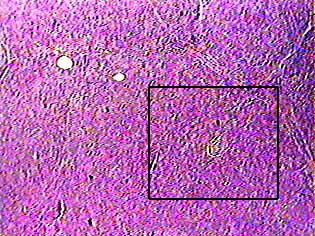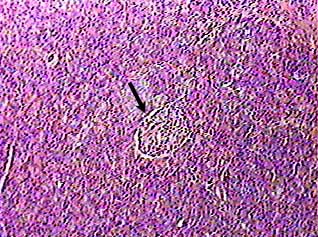
The pancreas is easily confused with other organs like the parotid salivary gland and liver. All of these organs contain small, densely-packed cells of epithelial origin. No wonder they look alike. So to tell them apart, you have to find the unique characteristics of each organ. In this case, that would be something found in the pancreas but not in the parotid gland or liver. The area in the box is enlarged in the image below this one. In the center of the box is a lighter area (very hard to see in this image) called a pancreatic islet or islet of Langerhans.

The pancreas contains two sets of cells: exocrine cells that secrete enzymes via ducts into the intestine, and endocrine cells that secrete hormones into the bloodstream. The exocrine cells are small and arranged in spherical secretory units called acini. On a slide, one acinus would look something like a pie cut into several pieces. The individual cells are shaped much like the pieces of pie--wide on the outer edge and narrow in the center. Areas of the pancreas where the exocrine cells are located stain darker. The endocrine cells are larger and stain lighter. They are arranged in clumps called pancreatic islets or islets of Langerhans (arrow).